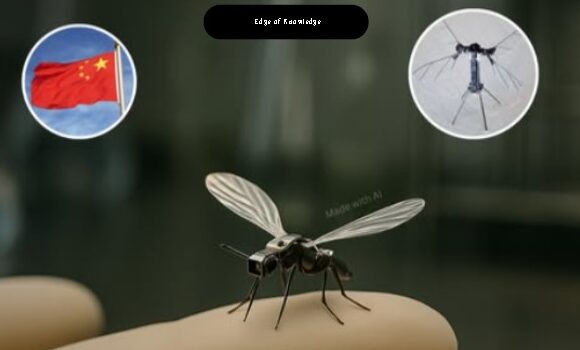China’s Insect-Sized Surveillance Drone Signals a New Era in Military Technology
In a striking fusion of nature and next-generation defense technology, China has introduced a new military prototype that could reshape the future of surveillance. Developed by researchers at the National University of Defense Technology, this ultra-lightweight device is a mosquito-sized drone engineered to resemble — and move like — an actual insect.
Weighing less than 0.2 grams, the drone is designed with astonishing precision. Its wings flap rhythmically, its body mimics the slender build of a mosquito, and its legs are as fine as a human hair. These features aren’t just for show — they allow the drone to blend seamlessly into natural environments, making it ideal for covert reconnaissance missions.
According to information shared by Newsweek, the prototype is still in the experimental phase. However, the implications are substantial. The drone is capable of remote control through either a small handheld device or even a smartphone, which allows operators to guide it through difficult terrain or sensitive locations that would be unreachable — or too risky — for traditional surveillance methods.
The strategic potential of such a development cannot be overstated. In the age of modern warfare, where intelligence is as critical as firepower, a device that can quietly infiltrate secured areas without alerting the enemy holds enormous value. Unlike conventional surveillance drones, which are often visible or audible due to their size and rotor noise, this insect-sized model remains nearly imperceptible to the naked eye and the ear alike.
This innovation is the latest in a global trend toward biomimicry — the practice of designing machines that emulate structures and systems found in nature. Scientists and engineers have increasingly looked to the animal kingdom for inspiration, believing that millions of years of evolutionary fine-tuning offer useful models for design efficiency and stealth. The mosquito, notorious for being elusive and difficult to detect, provides the perfect biological template for stealth surveillance.
Additionally, this technology reflects the broader momentum toward miniaturization in defense and tech sectors. As hardware becomes smaller and more efficient, new possibilities are opening up in the fields of cybersecurity, national defense, and artificial intelligence. Devices that once took up rooms of space can now fit in the palm of a hand — and in this case, even smaller.
While the mosquito drone is not yet ready for deployment, its existence signals a dramatic evolution in surveillance tactics. Once confined to large, high-flying drones, surveillance capabilities are now entering a new micro-scale frontier. If perfected and mass-produced, such devices could be used in a variety of operations — from military intelligence-gathering to disaster response, hostage situations, or even search-and-rescue missions where stealth and precision are vital.
Experts also note that while the benefits of such technology are clear, the ethical and legal implications must be considered. Issues surrounding privacy, airspace regulations, and potential misuse will require careful oversight as the technology matures.
Nonetheless, the project represents a landmark moment in the convergence of nanotechnology, robotics, and strategic defense. It is a glimpse into a future where machines no longer resemble machines — but nature itself.
From biological mimicry to near-invisible performance, China’s mosquito drone could redefine the art of surveillance, intelligence, and the very shape of war.
Source: Newsweek
